A Better Future for the Planet Earth
Preface & Background (2012-2016)
The Earth Summit was held in Rio de Janeiro, Brazil in 1992 to raise awareness about the global environment and move toward sustainability to ensure that all living things could exist in harmony.
In the same year, Asahi Glass Foundation founded the Blue Planet Prize; and the first laureates were announced at the Earth Summit.
Since then, the Asahi Glass Foundation has awarded Blue Planet Prizes for the past 25 years to individuals, groups, and organizations who have worked toward solving global environmental issues. We have continued this activity in the hope of raising public awareness about global environmental issues by making the achievements of the Blue Planet laureates known to the world.
In 2017, 25 years after the Earth Summit, the Blue Planet Prize also celebrates its 25th anniversary.
Looking back over the past quarter of a century, the concentration of carbon dioxide in the air has exceeded 400 ppm, flood and drought have become more frequent, typhoons have become stronger, and coastal areas and islands have become submerged due to the rises in the sea level. These global environmental issues that were at one time simply research themes have changed into actual issues that have a direct impact on our lives.
Against this backdrop, COP21, which took place in Paris in December 2015, adopted agreements on two matters: (1) Keeping the increase in average global temperature this century well below 2 degrees Celsius above pre-industrial levels and exerting effort to limit temperature increase even further to 1.5 degrees Celsius; and (2) Reducing global greenhouse gas emissions to zero between 2050 and 2100.
Two years have passed since COP21, and some countries have withdrawn from the agreement; however, it was also clarified that public awareness of global environmental issues is higher than ever around the world.
Better Future for the Planet Earth Vol. V is a collection of the lectures given by Blue Planet Prize laureates from 2012 to 2017 (the 21st – 25th Blue Planet Prize winners). We publish this book in the hope that their messages will prompt renewed commitment to solving global environmental issues.
I always try to keep in mind that we are not landlords but residents on the Earth. As past generations have preserved the Earth for us, we have the obligation to keep it safe and beautiful for the next generation.
It is a great joy for us to know that the Blue Planet Prize contributes to goal of ensuring that the next generation has a healthy planet.
December 2017
Kazuhiko Ishimura, President, Asahi Glass Foundation
The Earth is a a precious ecosystem, sustaining, every living thing.
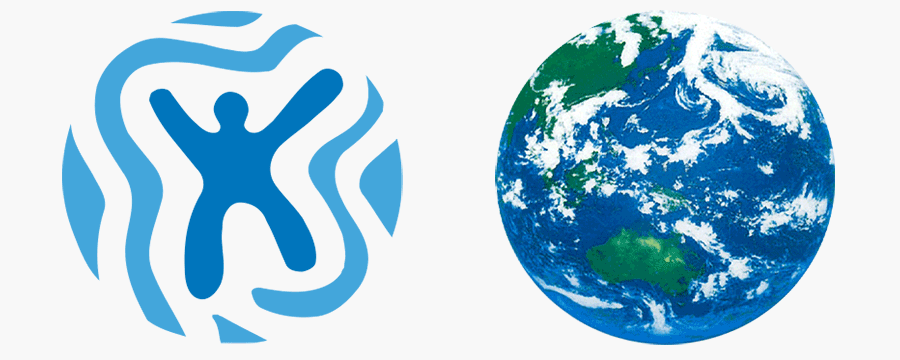
At the Asahi Glass Foundation, we hope that people
around the world will work toward protecting our planet from destruction,
ensuring our treasured
inheritance continues to exist for future generations.
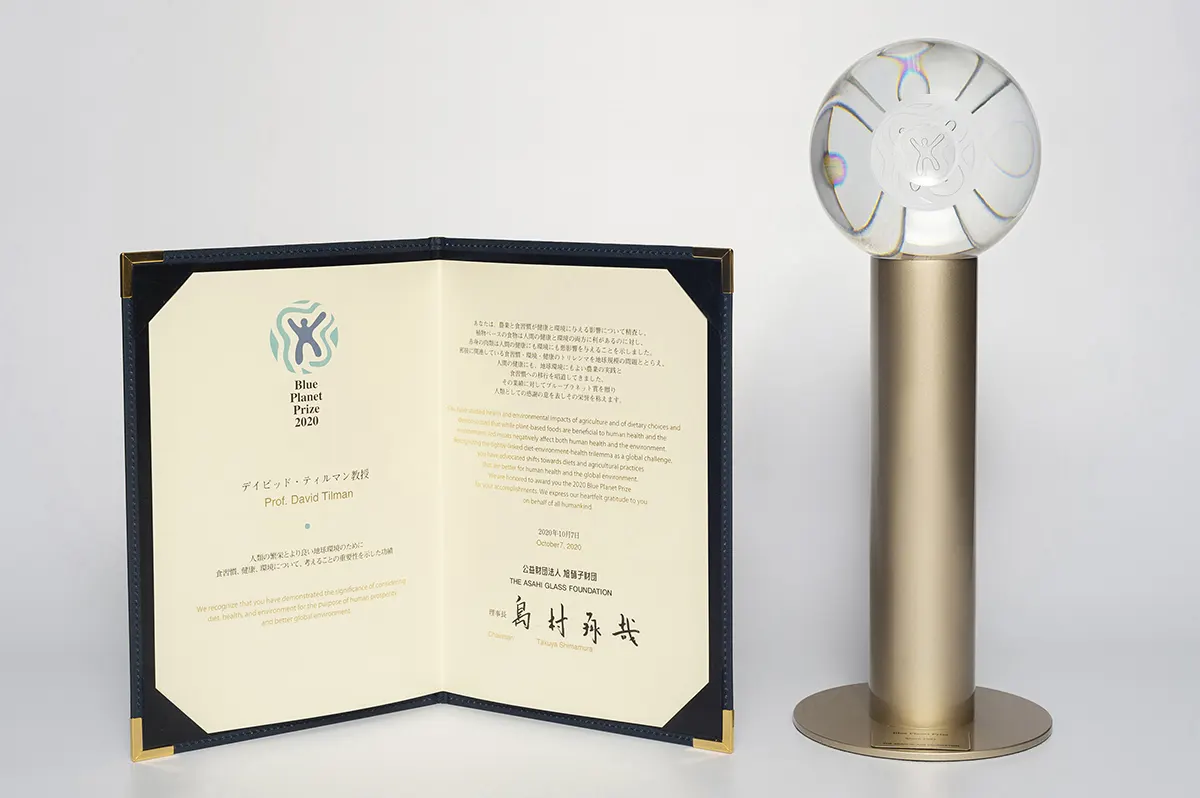
The Blue Planet Prize Trophy and Certificate
The Blue Planet Prize symbol, top left, represents our responsibility toward our fragile home. It is a symbol of hope for our children, of coexistence with and intimate connection to our environment. This design depicts the delicate balance and dynamic interrelationship of our world: the pristine blue sky and sea, people, nature and the universe.
Inaugural Blue Planet Prize Winners Announced at UNCED (1922)
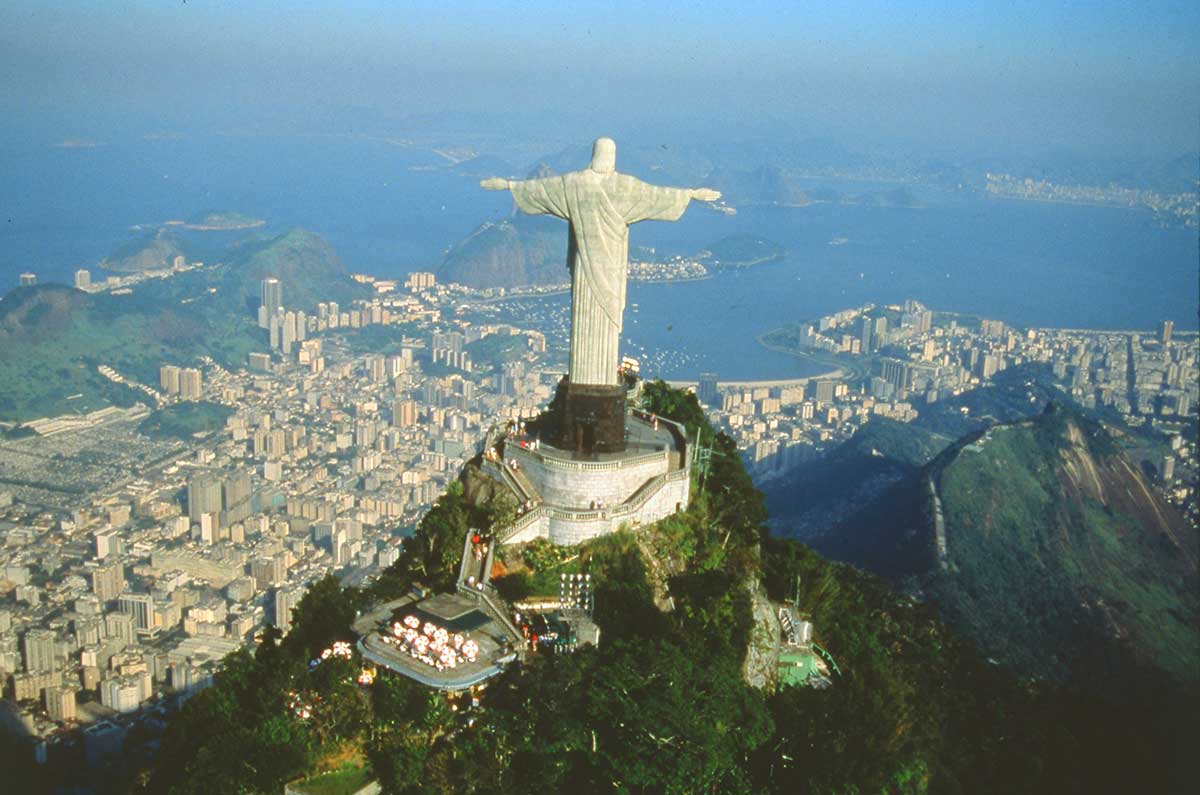
Announcement of Winners
The winners of the inaugural Blue Planet Prize were announced during UNCED, which took place in Rio de Janeiro from June 3 to June 14, 1992. On June 4, the Foundation held a media reception at the Meridien Hotel in Rio de Janeiro. On June 8, the winners were announced in the Briefing Room of the Rio Centro Convention Center, the same room in which the United Nations held its UNCED press conference. The Foundation also sponsored a display booth spotlighting its activities at Global Forum '92, an event organized by a number of nongovernmental organizations (NGOs) and held during UNCED in Rio's Flamengo Park.
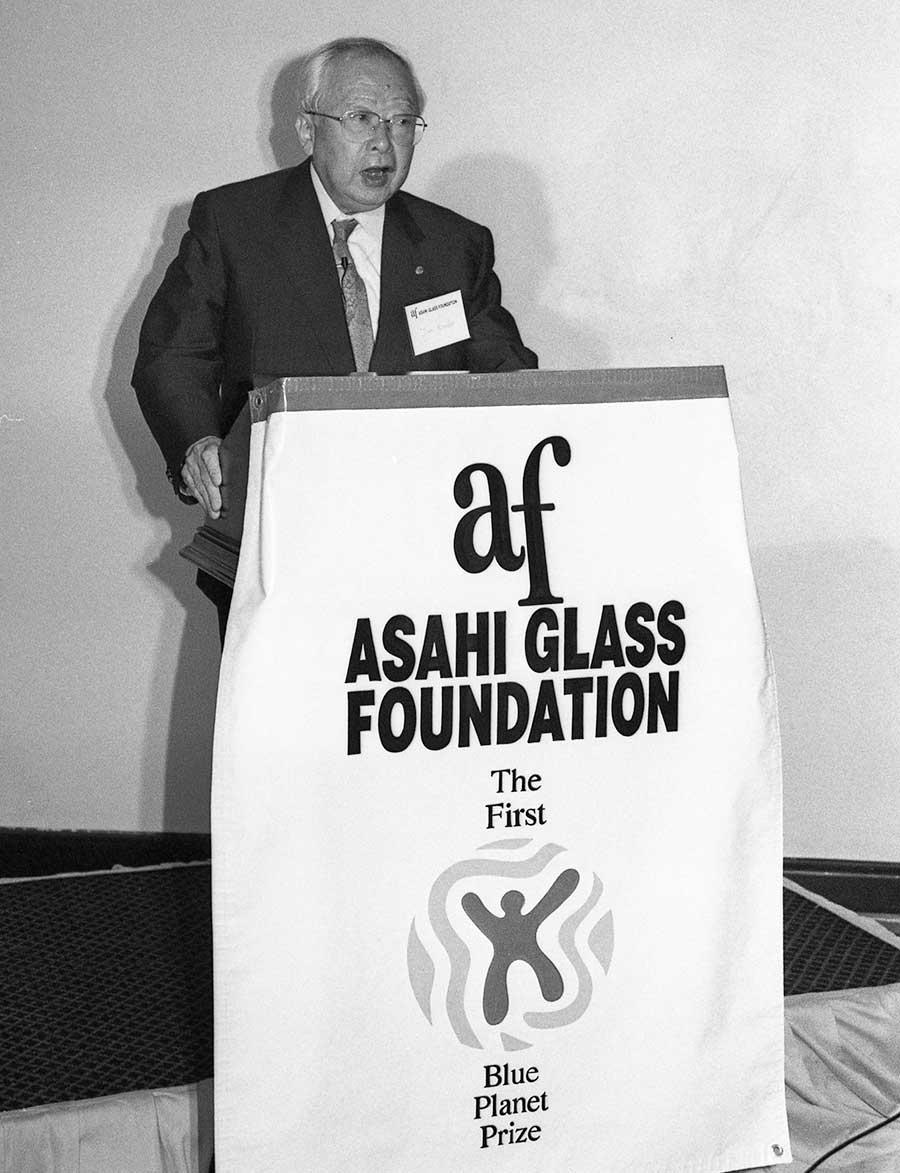
Professor Jiro Kondo, President of the Science Council of Japan and a director of the Asahi Glass Foundation, makes a speech at the media reception.
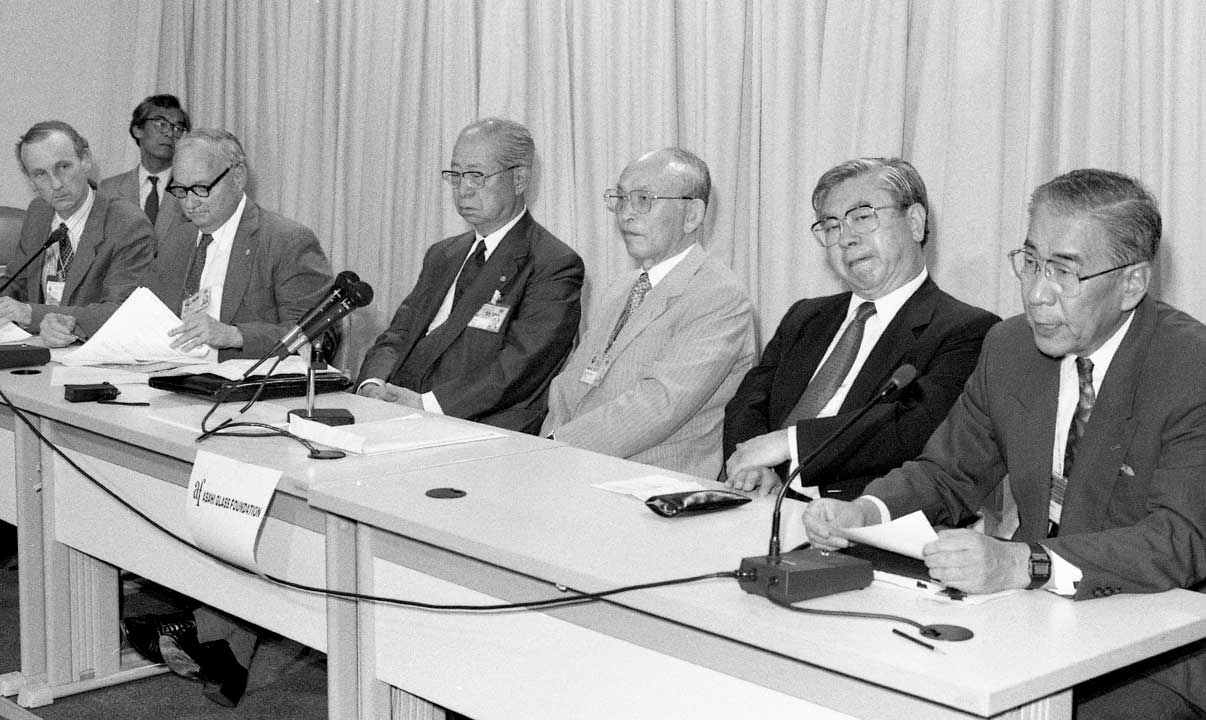
Attending the awards announcement were, from left, Richard Sandbrook, executive director of the IIED; Maurice Strong, secretary-general of UNCED*; Dr. Saburo Okita, former minister of Foreign Affaires and a director of the Asahi Glass Foundation; Hideaki Yamashita, chairman of the Asahi Glass Foundation; Ambassador Masaki Seo; and Osamu Shiragami, senior executive director of the Asahi Glass Foundation.
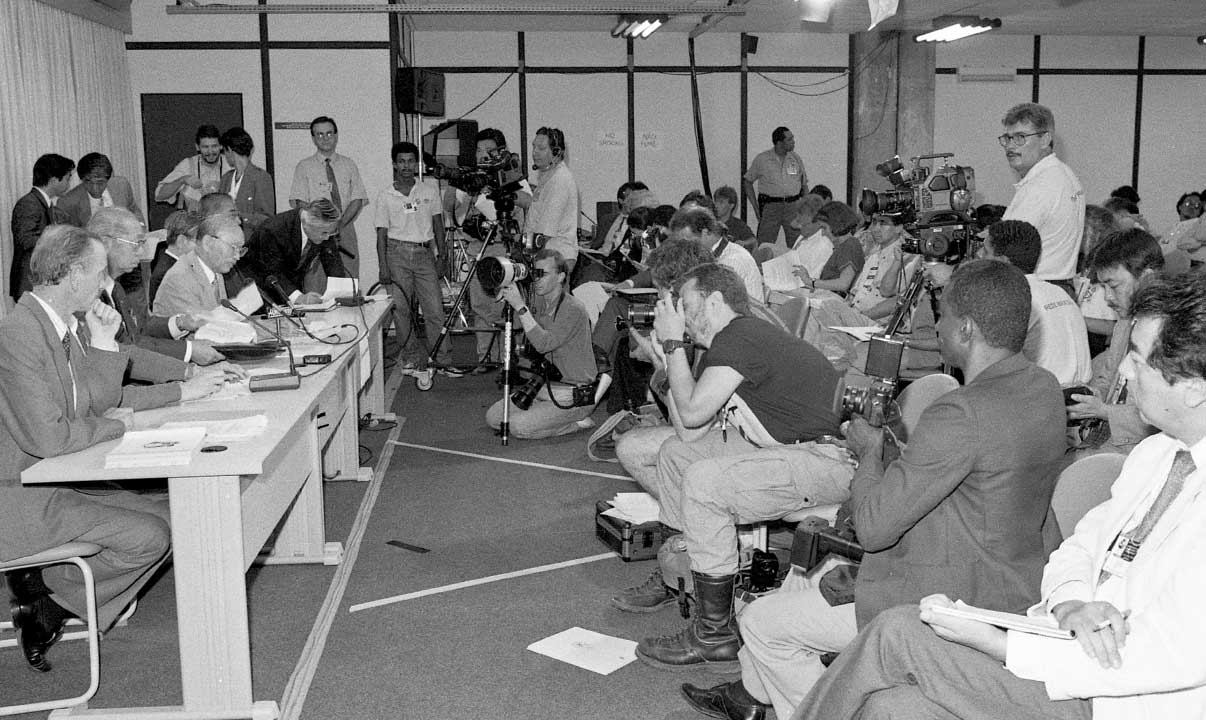
Press conference at the Earth Summit in Rio de janeiro.
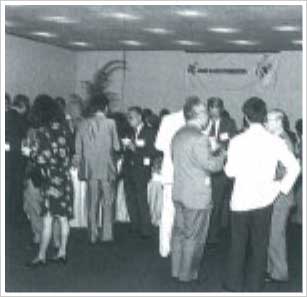
Media reception prior to the press conference on the announcement of the awards.
*UNCED = United Nations Conference on Environment and Development All personal titles refer to positions held at the time.
Blue Planet Prize Laureates since 1992
| Year | Laureat | Country |
|---|---|---|
| 1992 | Dr. Syukuro Manabe | USA |
| International Institute for Environment and Development (IIED) | Founded in UK | |
| 1993 | Dr. Charles D. Keeling | USA |
| IUCN-The World Conservation Union | Headquartered in Switzerland | |
| 1994 | Prof. Dr. Eugen Seibold | Germany |
| Mr. Lester R. Brown | USA | |
| 1995 | Dr. Bert Bolin | Sweden |
| Mr. Maurice F. Strong | Canada | |
| 1996 | Dr. Wallace S. Broecker | USA |
| M.S. Swaminathan Research Foundation | Founded in India | |
| 1997 | Dr. James E. Lovelock | UK |
| Conservation International (CI) | Headquartered in Washington, D.C., USA | |
| 1998 | Prof. Mikhail I. Budyko | Russia |
| Mr. David R. Brower | USA | |
| 1999 | Dr. Paul R. Ehrlich | USA |
| Prof. Qu Geping | China | |
| 2000 | Dr. Theo Colborn | USA |
| Dr. Karl-Henrik Robèrt | Sweden | |
| 2001 | Lord (Robert) May of Oxford | Australia |
| Dr. Norman Myers | UK | |
| 2002 | Professor Harold A. Mooney | USA |
| Prof. J. Gustave Speth | USA | |
| 2003 | Dr. Gene E. Likens & Dr. F. Herbert Bormann | USA |
| Dr. Vo Quy | Vietnam | |
| 2004 | Dr. Susan Solomon | USA |
| Dr. Gro Harlem Brundtland | Norway | |
| 2005 | Prof. Sir Nicholas Shackleton | UK |
| Dr. Gordon Hisashi Sato | USA | |
| 2006 | Dr. Akira Miyawaki | Japan |
| Dr. Emil Salim | Indonesia | |
| 2007 | Professor Joseph L. Sax | USA |
| Dr. Amory B. Lovins | USA | |
| 2008 | Dr. Claude Lorius | France |
| Professor José Goldemberg | Brazil | |
| 2009 | Professor Hirofumi Uzawa | Japan |
| Lord (Nicholas) Stern of Brentford | UK | |
| 2010 | Dr. James Hansen | USA |
| Dr. Robert Watson | UK | |
| 2011 | Dr. Jane Lubchenco | USA |
| Barefoot College | Founded in India | |
| 2012 | Professor William E. Rees & Dr. Mathis Wackernagel | Canada & Switzerland |
| Dr. Thomas E. Lovejoy | USA | |
| 2013 | Dr. Taroh Matsuno | Japan |
| Professor Daniel Sperling | USA | |
| 2014 | Prof. Herman Daly | USA |
| Prof. Daniel H. Janzen & Instituto Nacional de Biodiversidad (INBio) | USA & Founded in Costa Rica | |
| 2015 | Professor Sir Partha Dasgupta FBA FRS | UK |
| Professor Jeffrey D. Sachs | USA | |
| 2016 | Mr. Pavan Sukhdev | India |
| Prof. Markus Borner | Switzerland |
Some Background on the Blue Planet Prize
Humankind has only one home, the Earth, and we all bear responsibility to leave it in a habitable condition for future generations. In recognition of those whose efforts help provide solutions for global environmental problems, the Foundation established the Blue Planet Prize, an annual international award presented to individuals and organizations that have made outstanding contributions toward that aim. The year the prize was first awarded, 1992, was the year that the world turned its attention to environmental issues at the Earth Summit in Rio de Janeiro. In keeping with the spirit of that conference, the Foundation hopes to help raise awareness of and interest in environmental issues throughout the world while expressing its appreciation for the achievements of the winners.
Each year, the Foundation chooses two individuals or organizations whose pioneering achievements represent major contributions to sustainable development and to solving such environmental problems as climate change, global warming, acid rain, ozone layer depletion, ecosystem destruction in tropical rainforests, species extinction and desertification. The Foundation is also keen to recognize work in areas related to energy, food, population, waste treatment, recycling, as well as environmental management, ethics, philosophy and education. The work of the award winners must in some way contribute to the harmonious coexistence of people, society and the environment.
They should contribute to humankind's pool of scientific knowledge as well as to the realization of a global community that uses science and technology for the good of all. Candidate nominations are received from more than 120 countries worldwide. Living citizens of all nations, irrespective of gender, race or religion, are eligible. A short list of nominees is compiled by the Selection Committee. Final decisions are made by the Presentation Committee and nominees are approved by the Foundation's Board of Directors and Councilors.
The winners are presented with a certificate of merit, a commemorative trophy and a supplementary prize of 50 million yen at an awards ceremony. The ceremony takes place in Tokyo and is attended each year by members of the Japanese royal family, government officials, foreign diplomats, academics and researchers, as well as representatives from many fields of endeavor. On the day following the awards ceremony, the laureates present lectures on their work to an audience at the United Nations University in Tokyo. This lecture event is well attended by the general public, journalists, environmental specialists and academics from related fields.
The Blue Planet Prize was so named in the hope that our blue planet will be a shared possession capable of sustaining all life time far into the future. The Earth is a precious ecosystem, home to every living thing. At the Asahi Glass Foundation, we sincerely hope that people around the globe will work toward protecting our planet from environmental deterioration, ensuring that the natural environment continues to exist for future generations. We believe wholeheartedly that through the ingenuity and earnest efforts of humanity the serious environmental problems we now face will someday be solved.
Information on the laureates and their achievements is also available online on the Foundation's web site: http:///www.af-info.or.jp.